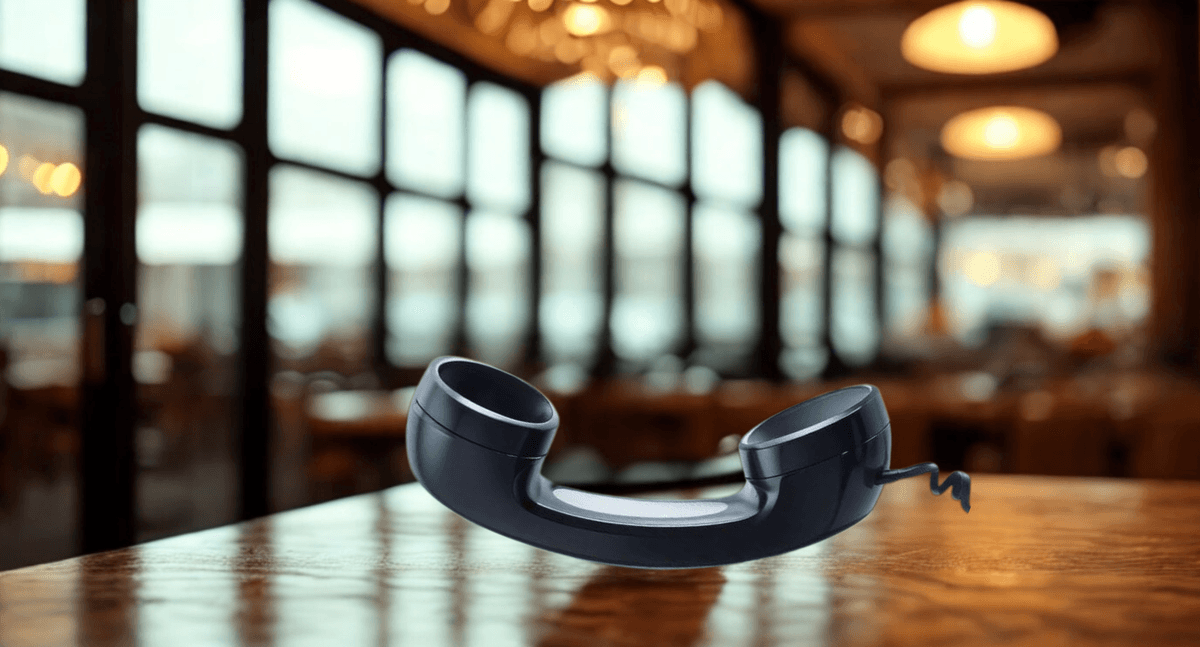
Never Miss a Customer Again: The ROI of AI for Restaurants
Boost revenue and customer satisfaction with AI for restaurants. See how AI agents turn missed calls into insights and growth.
More than half of American adults eat out three or more times a week, and over 35 dine on fast-food meals more than twice per week. Perhaps that’s why there are more than twelve different types of restaurants in the United States, from fine dining and fast casual to bistros, cafes, cafeterias, food trucks and others.
Owning or running a restaurant comes with numerous challenges, including food safety, fluctuating food costs, inventory management, labor law changes and reputation management. These businesses also are tasked with maintaining a high level of customer service, drawing and retaining consumers and competing with other restaurants.
Recruiting and retaining employees is an ongoing obstacle for restaurants of all types and sizes, which is why the average annual restaurant industry turnover rate is 79.6 percent. And, 27 percent of restaurant operators report having more than 20 percent below the necessary levels of staff.
To optimize their current staff, some restaurants are utilizing artificial intelligence (AI). In addition to performing some routine tasks, AI helps restaurant operators predict labor needs based on peak business hours. This aids in optimizing labor spend while reducing employee burnout.

Even drive-through restaurants are employing AI. Why? Because the technology can reduce errors by as much as 90 percent.
We have compiled a list of even more ways the restaurant business can benefit from using AI, from answering customer calls all the way to managing a facility’s reputation.
A missed call can mean an unhappy customer, and that can result in lost revenue. A conversational AI solution can automatically answer customer calls 24/7, providing information about restaurant hours, delivery options, directions or the menu. If someone calls during peak business hours, the AI agent can answer inquiries without disturbing staff, another way to alleviate burnout among employees.
A lot of customers have favorite menu items or at least stick to the same sort of cuisine. Some conversational AI agents have the capability to make menu recommendations based on customers’ previous orders, thereby improving consumer satisfaction. Similar AI tools enable customers to provide immediate feedback after their meal, which enables restaurants to personalize future meals for those individuals.
Along with labor costs, food expenses are one of the two biggest line items for restaurants. Utilizing conversational AI platforms allows restaurant operators to more accurately track inventory and eliminate food waste. Such tools also integrate operational data to predict ingredients for reorder, so whether the restaurant is unusually busy or unexpectedly slow, operators can stock accordingly.
Making your restaurant visible to potential customers is crucial to its operational success, which is why marketing is essential. Using customer data, AI can create targeted marketing campaigns or send specific messages to consumers based on their past visits to and orders at the restaurant. This data also can be utilized to know which audience a restaurant should target for a special event.
Minimizing wait times is not always easy for restaurants to achieve, but it does do a lot to improve customer satisfaction. Through AI, restaurant operators can automate bookings based on real-time table availability, how many customers are dining and how busy the facility is. It can track which tables are full, which are being cleaned and which are ready for new customers, enabling restaurants to optimize their seating capacity.

Reviews can make a big impact on restaurants. Negative ones, even if unfair, often damage a restaurant’s reputation, while positive ones can result in rapid growth. Consistently monitoring reviews, though, can be extremely time-consuming. There are AI solutions that proactively analyze reviews across multiple platforms, categorize them into negative, neutral or positive and generate an appropriate response based on pre-written templates. Another use of AI in restaurants is sending automatic reminders to customers to request a review, thereby increasing ratings.
Now’s the time to integrate AI into your recipe for success. Give a Revmo AI Engineer a call right now to fully bake your plan.

Boost revenue and customer satisfaction with AI for restaurants. See how AI agents turn missed calls into insights and growth.


